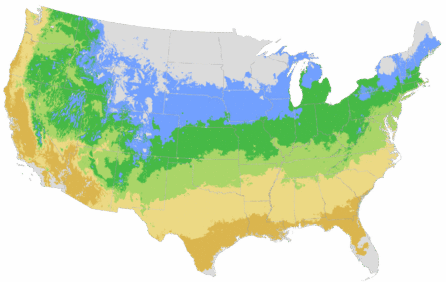You're growing in this Zip Code:
Change LocationDiscover Plants for Your Area
Sentivia™ Blue English Lavender
Lavandula angustifolia 'LAAZ0001'
Retailers Near You
No Retailers found within 50 miles of your zipcode
Be Inspired: How to Use this Plant
| Bloom Time | Summer |
|---|---|
| Deciduous/Evergreen | Evergreen |
| Special Features | Easy Care, Waterwise, Compact Form |
| Problems/Solutions | Deer Resistant, Rabbit Resistant |
| Growth Rate | Moderate |
| Flower Attributes | Flowers for Cutting, Fragrant, Showy Flowers |
| Landscape Use | Border, Container, Accent, Edging, Hillside, Small Spaces |
| Design Ideas | A superior plant for hot, dry slopes and banks. Rugged enough for rock gardens in warm climates and natural rocky outcroppings where it is likely to naturalize. Exceptional component of Mediterranean style gardens both formal and casual. With similar requirements as western natives, it is suitable for xeriscape or wild gardens in dry climates. Suited to traditional mixed borders with perennials and flowering shrubs. Performs in large artistic pots and particularly beautiful in classical style with antique finish. |
| Flower Color | Blue |
| Foliage Color | Gray-green |
| Companion Plants | Black-Eyed Susan (Rudbeckia); Rosemary (Rosmarinus); Rose (Rosa); Coneflower (Echinacea); Shasta Daisy (Chrysanthemum) |
| Care Instructions | Thrives in lean, loose, fast-draining, slightly alkaline soil; avoid heavy, soggy soils. Plant with crowns slightly above soil level. Water regularly during the first growing season to establish root system; once established, reduce frequency. Prune back by one-half after flowering to encourage rebloom. |
| Lore | The lavenders have been grown in Europe long before Linnaeus' time and he named both this genus and species. Lavandula is derived from the Latin verb lavo or lavandus - to wash, because the Romans used it extensively in their ablutions. French lavender is not native to France, but hot, dry Spain, Greece and North Africa. Its common name is derived merely from the region where it is grown commercially, Province, France. The plants originally classified as L. spica and L. vera are now collectively grouped under L. angustifolia. The species and well over fifty cultivars are considered the most cold hardy and produce what many say is the sweetest of all lavender oils. |
| Bloom Time | Summer |
|---|---|
| Deciduous/Evergreen | Evergreen |
| Special Features | Easy Care, Waterwise, Compact Form |
| Problems/Solutions | Deer Resistant, Rabbit Resistant |
| Growth Rate | Moderate |
| Flower Attributes | Flowers for Cutting, Fragrant, Showy Flowers |
| Landscape Use | Border, Container, Accent, Edging, Hillside, Small Spaces |
|---|---|
| Design Ideas | A superior plant for hot, dry slopes and banks. Rugged enough for rock gardens in warm climates and natural rocky outcroppings where it is likely to naturalize. Exceptional component of Mediterranean style gardens both formal and casual. With similar requirements as western natives, it is suitable for xeriscape or wild gardens in dry climates. Suited to traditional mixed borders with perennials and flowering shrubs. Performs in large artistic pots and particularly beautiful in classical style with antique finish. |
| Flower Color | Blue |
| Foliage Color | Gray-green |
| Companion Plants | Black-Eyed Susan (Rudbeckia); Rosemary (Rosmarinus); Rose (Rosa); Coneflower (Echinacea); Shasta Daisy (Chrysanthemum) |
| Care Instructions | Thrives in lean, loose, fast-draining, slightly alkaline soil; avoid heavy, soggy soils. Plant with crowns slightly above soil level. Water regularly during the first growing season to establish root system; once established, reduce frequency. Prune back by one-half after flowering to encourage rebloom. |
|---|
| Lore | The lavenders have been grown in Europe long before Linnaeus' time and he named both this genus and species. Lavandula is derived from the Latin verb lavo or lavandus - to wash, because the Romans used it extensively in their ablutions. French lavender is not native to France, but hot, dry Spain, Greece and North Africa. Its common name is derived merely from the region where it is grown commercially, Province, France. The plants originally classified as L. spica and L. vera are now collectively grouped under L. angustifolia. The species and well over fifty cultivars are considered the most cold hardy and produce what many say is the sweetest of all lavender oils. |
|---|
Retailers Near You
No Retailers found within 50 miles of your zipcode
Retailers Near You
No Retailers found within 50 miles of your zipcode
Buy Online
This plant is not available to purchase online.
We no longer grow this plant. For replacement suggestions, check out the plants “You May Also Like” below.
About Us
We have been pioneers and craftsmen in the art of growing plants for nearly
100 years. Since our founding in Southern California by Harry E. Rosedale, Sr.
in 1926, we have been absolutely dedicated and obsessed with quality.
We have been pioneers and craftsmen in the art of growing plants for nearly 100 years. Since our founding in Southern California by Harry E. Rosedale, Sr. in 1926, we have been absolutely dedicated and obsessed with quality.





